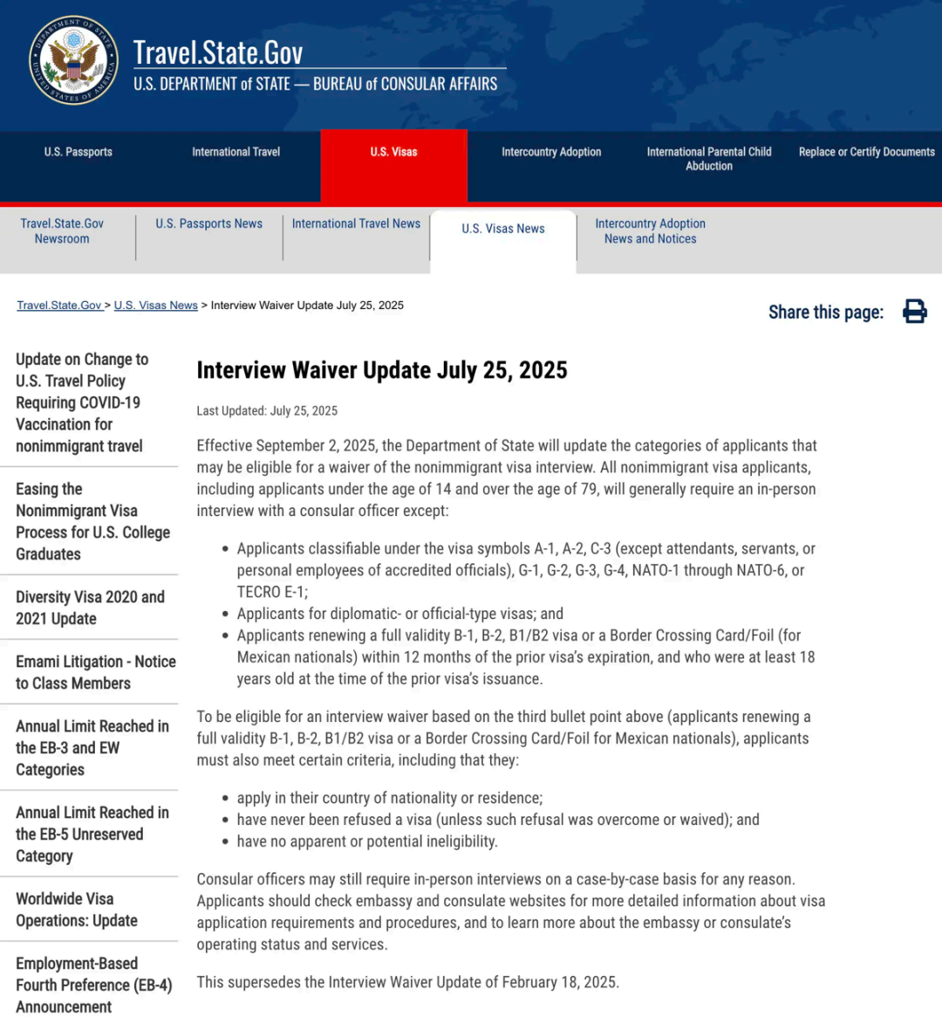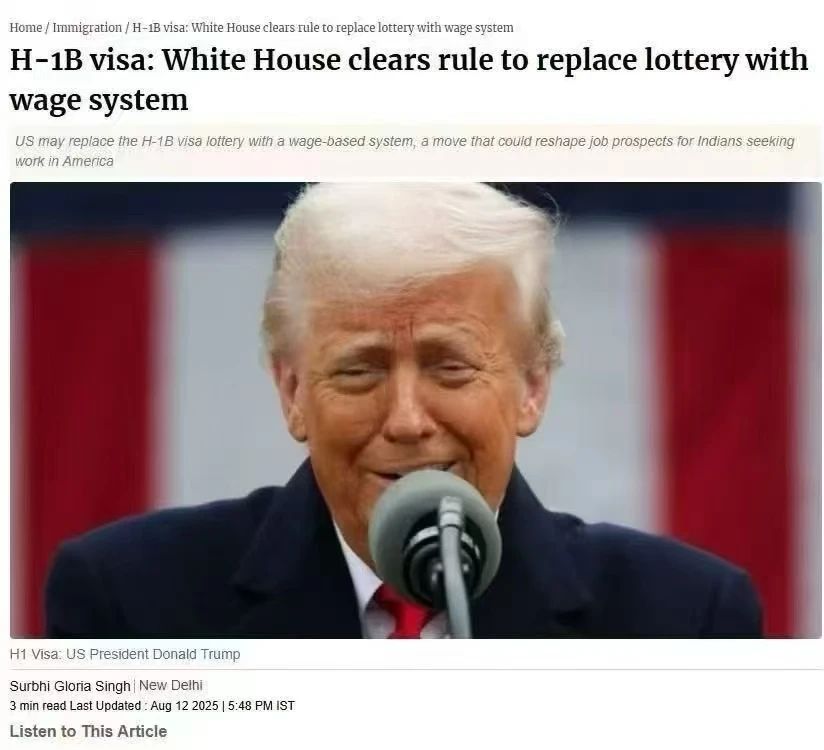End of Dropboxes and Lottery: How the 2025 H-1B Reforms Will Reshape U.S. Immigration
The U.S. immigration landscape is undergoing a seismic shift. Beginning September 2025, H-1B visa holders will no longer benefit from...
In a historic policy shift, the United States is moving away from its traditionally open H-1B visa system towards a merit-based, selective immigration model. Starting 2 September 2025, two major changes will redefine how international professionals and students secure and maintain their legal status in the U.S.
Let’s break down what these changes are, whom they affect, and what strategies can help future-proof your American dream.
1️⃣ Interview Waiver Era Ends – Personal Appearance Now Mandatory
According to a U.S. State Department announcement on 25 July 2025, nearly all H-1B visa holders seeking renewal will soon lose the right to interview waivers.
Key changes from 2 September 2025:
❌ Dropbox/Interview Waiver Programme eliminated for most visa categories
❌ Third-country renewals banned – applicants must return to their home country for consular processing
❌ Exemptions for children under 14 and seniors over 80 removed – everyone must appear in person
✅ Diplomatic and limited government exceptions remain
Previously, H-1B workers could renew their visas via Dropbox if employer details hadn’t changed and the visa expired within 12 months. Now, they must attend an interview—often in their country of nationality—regardless of travel or job stability.
2️⃣ The Lottery Is Dead – Salary-Based Selection Is the New Rule
While the renewal rules will challenge existing visa holders, the more transformative change impacts new applicants. On 8 August 2025, the Office of Information and Regulatory Affairs (OIRA) approved a proposal to abolish the random H-1B lottery in favour of a salary-ranking system.
What’s changing?
Instead of chance, your wage level now determines your visa outcome. The U.S. Department of Labor categorises positions into four wage levels under the LCA (Labour Condition Application) system:
| Wage Level | Description | Share of Applicants | Estimated Selection Rate | Target Group |
|---|---|---|---|---|
| Level 4 | Fully competent/senior | <16% | ~100% | Senior engineers, quant analysts |
| Level 3 | Experienced professionals | ~20% | High | Mid-career professionals |
| Level 2 | Entry-level qualified | ~50% | Moderate | Junior employees |
| Level 1 | Beginners/fresh grads | ~14% | Near 0% | Recent international graduates |
“From now on, the higher your salary, the higher your chance of winning the visa,” summarised one legal expert.
🔄 Why These Changes Matter
Together, these reforms signal a fundamental shift in U.S. immigration priorities:
From access-based to selectivity-based
From general support to employer-quality focus
From “lottery luck” to economic value
This transition will disproportionately affect international students, junior workers, and mid-tier companies that may offer lower entry salaries.
🎯 Smart Strategies for Navigating the New U.S. Immigration Landscape
✅ Use the Final Interview Waiver Window
If you qualify under current rules, submit your H-1B renewal before 2 September 2025 to avoid the in-person interview requirement.
✅ Target High-Salary Employers
Your best chance under the salary-based selection system lies with top-tier sponsors, such as:
Tech giants: Google, Amazon, Meta
Finance: Goldman Sachs, Morgan Stanley
Consulting: McKinsey, BCG
These employers not only offer Level 3 or Level 4 wages but also have robust immigration support systems.
✅ Choose Your Job Location Wisely
Geography affects salary level classification.
For example, a $100,000 salary in San Francisco might be Level 2, but the same in Austin or Salt Lake City could qualify as Level 3, increasing your odds.
✅ Explore Alternative Pathways
If H-1B becomes unattainable, consider more strategic immigration options, including:
EB-1A (Extraordinary Ability Visa) – ideal for academics, researchers, or elite professionals
NIW (National Interest Waiver) – suitable for STEM workers, entrepreneurs, public health experts
EB-5 Investment Visa – especially attractive under the new rural TEA programme, where there is no visa backlog
Under EB-5 reform, concurrent filing is allowed, meaning you can submit your I-526E (investment petition) and I-485 (adjustment of status) simultaneously—securing work and travel rights while awaiting your green card.
🧾 Conclusion: Visas Are Temporary—Green Cards Are Freedom
These dual reforms mark the end of an era and the start of a new, more competitive visa environment. As the U.S. government prioritises quality over quantity, international talent must prepare to adapt or explore smarter alternatives.
A work visa may open the door, but a green card is the key to staying. In this shifting landscape, a well-planned legal strategy isn’t optional—it’s essential.








相关文章
Greece Introduces New Cash Declaration System and Secures Top Spot in Global Residency Rankings
Starting 1 August 2025, Greece will launch a nationwide online system for declaring cash at all customs points, reducing wait times and ...
EB-5 Concurrent Filing: A Golden Opportunity or a Risky Trap?
The EB-5 concurrent filing policy allows investors to submit I-526E and I-485 applications simultaneously, securing a temporary work and...
Converting Commercial to Residential in Greece: A Complete Guide for Golden Visa Investors
Under Greek law, certain commercial properties can be legally converted into residential units, qualifying for the Golden Visa with as...
Why Turkey’s Citizenship-by-Investment Programme is Attracting Global Wealth – and How Ordinary Investors Can Benefit
Turkey remains one of the few major economies offering a straightforward and affordable citizenship-by-investment route. With property...